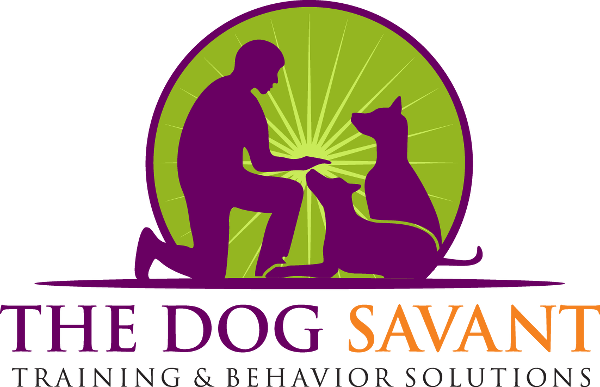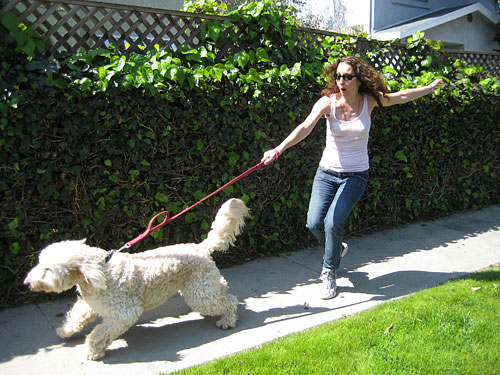5 Tips on how to stop leash pulling
Nobody wants their fun leisurely walk with their loving pet to turn into an all out tug-of-war battle, your will want to rush ahead and go wherever he wants. If you are quite happy to rush from tree to post whilst your dog smells which of his friends has been there before him, don’t bother reading on. If however you wish to take control of walkies and enjoy a pleasant walk with your canine family member here are 5 simple tips on how to stop leash pulling from your dog.
If you are in the greater Los Angeles or San Fernando Valley area contact us, we can help!
1. Preparation is Key:
If you want to stop leash pulling, don’t just put on the leash and go…Take 10-15 minutes (or more) of “lead time” to warm your dog up by walking them around the house with their leash / collar so they are more focused on their job versus being anxious about the walk once you actually are at the door after this warm up period is done. It is also helpful to have your dog wear their leash at random times other than pre-walk so they can reduce the strong associations they may be having with it always being a pre-cursor to walks.
2. Structure your Walks
Teaching your dog to obey a strong Heel or Let’s Go type of walking command will reduce the over-projection and anxiety associated with leash pulling in dogs. By having your dog commit to one clearly defined space next to you, it gives your dog a job to do and promotes focus in your direction instead of constantly thinking ahead! Plus, walking this way simulates how dogs (and many other animal species) align with a pack, herd, pod, etc. instead of the independent, over anticipation that leads to a dog thinking many steps ahead of where you and their bodies actually are. Which creates the cause for distractions and reactions on walks.
3. Structure your Dog’s Home Environments
As a professional dog trainer in Los Angeles most of my clients’s dogs do not just suffer from leash pulling as an isolated problem. Because I have been in the homes of literally thousands of dog owners with problem pooches I have had the opportunity to observe how most dogs who have unwanted behaviors like pulling on their leash are also highly anxious and hypersensitive in their indoor home lives as well. Examples of this are “tracking” their owners movements too closely / impulsively (following you everywhere nonstop), getting easily stimulated, or being pushy by having to “ask” for resources such as food, potty time, and attention. By giving dogs of this nature more structure and training at home when they may be too reactive to what is going on around them it communicate that we are able to keep track of them and give them things to do while we conduct our own human business in their presence. By implementing your dog training when you are actually living and not as a scheduled thing, you also help teach your pup how to listen to you while life is happening when you may really need it!
4. Socialization
Many dogs have difficulty walking because they are not socialized enough and become too stimulated and over reactive to things they are not familiar with. By getting your dog out in the world to experience as many people, dogs, and different environments as possible with a calm, association to listening versus reacting, they will learn how to be more neutral to what you may encounter on your walks.
5. Check Your Equipment
Unfortunately, some dog training equipment can be counterproductive to teaching your dog to stop leash pulling. Traditional harnesses or even a dog collar that is worn too low on a dog’s neck can trigger a pulling (opposition) reflex which creates the sensation for a dog to want to pull against this pressure and energy being dispersed too low and broadly across their bodies. This is how sled dogs operate! Some dog training equipment such as no-pull harnesses and gentle lead / head halti devices work a little better at preventing leash pulling physically, but does not address the over-projection of a dog’s thinking as the cause of why they have pulling problems. It’s in essence putting a band aid over the problem (most overly-positive dog training tends to do this) and a dog never learns how to organically walk as their natural instincts dictate. All dogs have this ability!
Instead, a collar worn snug behind a dogs ears (similar to how show dogs are walked and the dog whisperers collar) provides the right type of pressure to help draw focus inward and reorganize their sensory system to prevent them from over projecting. It is basically like teaching your dog how to meditate instead of them visualizing themselves halfway around the neighborhood before the walk even begins! Remember, we are not trying to choke or correct our dogs (primary reason dog owners / trainers avoid using a “training” collar in the first place) our goal is to project our energy or chi by sending light pressure in the pockets behind their ears as another dogs would do with their mouths to keep their structure while flowing together as a pack. You can even see dogs do this in play as they attempt to herd each other to establish angles and direction.
By learning how to connect with your dog naturally as a lifestyle and in your training you will begin to see results and learn how to stop leash pulling from day one…
Brett Endes, The Dog Savant is a professional dog trainer and author based in L.A. with over 20 years experience specializing in problem behavior and puppy development counseling. The Dog Savant hosts a weekly podcast and is currently developing a web-based show to promote his message of canine behavior awareness. Brett takes a unique approach to dog behavior like no other trainer. His methods are based on psychology and principals of meditation along with a dog’s natural way of communication. Brett has been affectionately called, “The man with a dog’s brain”. He is available for private consulting of individual clients and speaking engagements in the greater Los Angeles / San Fernando Valley area and worldwide. To learn more about Brett or for contact info please visit his website: dogtrainingLA.com or email: dogtrainingla@gmail.com

